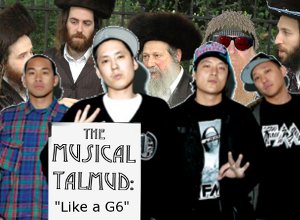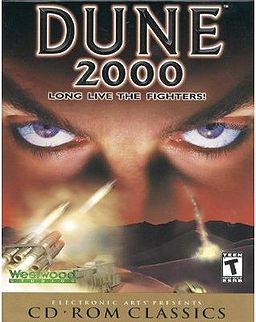 Back in late October, I was preparing for a Halloween party at the apartment of one of my sisters. The night before the party, we went grocery shopping and sat down with some friends to do some other decorating and prep work — a pretty chill night, all told.
Back in late October, I was preparing for a Halloween party at the apartment of one of my sisters. The night before the party, we went grocery shopping and sat down with some friends to do some other decorating and prep work — a pretty chill night, all told.
That same night, the night before my sister’s party, my sister’s downstairs neighbors threw their own party. The mostly nondescript, predictable dance and hip hop beats reverberated through the walls as we cut out bats from posterboard. We mostly paid it no mind — but there was one song that was so instantly recognizable, even though only its rhythm and baseline were clearly audible, that we had to stop and remark on it.
That week in late October, the song we remarked on hit number 1 on the billboard charts. It has gone on to become one of the most ubiquitous popular “rhythmic contemporary” dance tracks of day, “Like a G6” by a posse of Asian-American electro-hop artists from Los Angeles, Far East Movement:
“Like a G6” was the first ever mainstream #1 song by an Asian-American musical group (as with C&C Music Factory, the women singing in the video aren’t formally in the group — all four formal members of the group are Asian-American. It is a song of illusions, “not-quite-there”s and unrealities. Like much electronic music, it is both within and preoccupied by the debiologicization (which was not a real word, UNTIL NOW) of human artifice — the sense that what people make is made by automatons with interchangeable parts, appealing on teleological grounds to the relationship between song and dance (and the club experience in general) as the fulfillment of industrially and technologically admirable qualities of the human body.
It also talks about a whole bunch of stuff that is just totally out of place, which, if you’ve read my Musical Talmud entry on Ke$ha, you may know I see as characteristic of contemporary popular music as part of an effort to make the music more memorable and more likely to go viral as it creates tension and disruption in consideration and interpretation.
It strives to be less predictable by being less correct, and, in doing so, tells us something about celebration and cultural influence.
More on this and on Far East Movement’s nonce definition of “gangsta” (which matches no definition I have ever heard) after the jump —
Like a WHAT?
The first point of interpretation that usually comes up in this song is exactly what a G6 is. While, when researching this article, I found a number of interesting interpretations, I’m pretty sure Far East Movement is not talking about the six largest nations of the European Union or the G6 Rhino howitzer, the South African artillery vehicle:

Thanks to military-today.com for this image. As a matter of courtesy, we're hosting it on our servers rather than hotlinking it, and I'm making sure to attribute it. I don't do this for everybody (out of laziness rather than malice), but they seem like the kind of people you don't want to piss off.
But is in fact talking about the Gulfstream G650, a private jet that is so fancy that it hasn’t even been sold to the public yet and is already been touted as the fanciest private jet in the long, fancy history of fancy private jets:

With these guys, on the other hand, it is more beneficial to court their good sides and less critical to avoid their bad sides.
This isn’t a controversial interpretation – the plane appears at the end of the video. So, to the question “What is a G6?” the answer is “A specific model of airplane.” Thus, to be “so fly, like a G6,” means to be both fancy and airborne, two qualities bound up quite nicely in the business of executive aircraft sales.
However, prior to this song coming out, not a whole lot of people knew what a Gulfstream G650 was, and I’ll venture to say that most of the people who hear the song will never know. The song doesn’t depend on people knowing what a G6 is – it’s fine if people stay ignorant of it – otherwise, they’d explain it. It’s not like the song is being crushed by a surplus of words. But they don’t, and I think that’s on purpose.
My own opinion on this, which is a little speculative, is that “G-6” is meant to create an impression of technology so advanced and fancy it hasn’t come out yet, in line with cell phone and mp4 player terminology, which is something very much in the wheelhouse of the demographic this song is reaching out to (the word “wheelhouse,” by the way, is not in the wheelhouse of this group). In cell phones, we have G-1s, G-2s, 3G, and 4G. IPods now have 4G models. Even though these are all different things, it’s notable that nobody has a G6. G6s are beyond the pale. It’s like when somebody used to put the number “2000” after something to make it awesome.

Sorry Westwood, if time-traveling Albert Einstein isn't personally involved in your RTS, I am no longer interested.
So to be “Like a G6” is to be:
- Like a very fancy luxury airplane
- Like the experience of flying on a very fancy luxury airplane
- Technological and futuristic in a sleek and designed way, like a very fancy cell phone (indeed, the first object to show up in the video is an iPad, and the last is an airplane)
Note of course that, in a electronic song (yes, it is somewhat hip hop as well, but I do thing this song seems more techno-futuristic than Afrofuturistic), it is pretty common to draw comparisons between people and machines. So this is pretty par for the course.
Like a WHO?
Poppin bottles in the ice, like a blizzard
When we drink we do it right gettin slizzard
Sippin sizzurp in my ride, like Three 6
Now I’m feelin so fly like a G6
Like a G6, Like a G6
Now I’m feelin so fly like a G6.”
Most of “Like a G6” is about going out on the town and drinking a lot of champagne in an ostentatious manner. That’s pretty much it. It’s conspicuous how little actually happens in the lyrics of the song and how few different things are described. But there’s one note it keeps hitting that gives me pause: its invocation of Southern Hip Hop, and things Southern Hip Hop is known for doing that don’t really seem characteristic of this sort of musical act at all – or of the presentation of this song, or its aesthetic.
Are we really to believe that, as Far East Movement prepares for its evenings opening bottles of champagne in fancy electronic dance clubs and their own homes where, lest we forget, they keep the company of:
sober girls around me, they be actin like they drunk
They be actin like they drunk, actin-actin like they drunk
When sober girls around me actin-actin like they drunk.”
Are we really supposed to believe that Far East Movement, on the way to their third club of the night, celebrating their wealth with relatively responsible people, launching a contagious atmosphere of fun, where they prize nothing so much as the expensiveness and proliferation of their champagne and luxury goods (and fancy electronic devices) — Are we really supposed to believe that Far East Movement — wait, it’s even worse than that — are we supposed to believe that the 20-something girl singing lead vocals who is hanging out with Far East Movement and being all impressed by all their access to fancy stuff — that she is drinking prescription cough syrup?

This is what sizzurp is, in case you were wondering: Cough medicine with codeine and promethazine. It's not very classy, and it doesn't exactly make you fly like a jet airplane.
And are we really, really to believe that, Far East Movement, while doing all this, as they claim, resembles in any but the most superficial way, Oscar-winning Tennessee hip hop group Three 6 Mafia?
Sippin sizzurp in my ride, like Three 6″
I guess they both do dance-oriented hip hop with produced electronic elements, but I don’t get a similar sense of aesthetic or lifestyle from these two groups at all.
This is the song that won Three 6 Mafia the Oscar, from the movie Hustle and Flow (In their defense, most of their presentations do not involve quite so much interpretive dance):
http://www.youtube.com/watch?v=RfD2PWx3WHg
This is the song that won Far East Movement its first big taste of mainstream exposure, from Fast and the Furious, Tokyo Drift:
Well, I guess they use samples and references in similar ways sometimes, and they make similar appeals to past musical genres sometimes, but Three 6 Mafia seems to care a great deal that what they are doing be considered seriously. The stakes are higher – Three 6 Mafia sings a lot about dying, while Far East Movement does not. Three 6 Mafia lives as ostentatiously as it does for socioeconomic reasons that they talk about in their music. Here’s a really good example of a self-conscious Three 6 Mafia song:
There’s a lot of superficial discussion of fashion and drinking and having fun, but it is in opposition to poverty and difficult living – compensating for a bleak existence with posturing and showing off, and finding in the riches that come from professional success and inspire respect compensation and comfort from a bleak existence. This is the kind of attitude that has multiplatinum recording artists drinking prescription medication for fun.
Lest we think today’s hip hop stars have no edge because their music is so heavily produced, remember that Li’l Wayne was raised by a (mostly) single teenage mom in New Orleans, that he was constantly involved in all sorts of trouble and poverty-inspired hardship, and that he accidentally shot himself when he was 13. It makes sense he’d self-medicate with opiate cough medicine.
Far East Movement met as kids, graduated high school together, and blog together, do world tours and start websites — nothing I can find by any of them talks about why they make music independently of how much they love it, their very mature and well-developed commitment to the Asian-American musical community in Los Angeles and their aesthetic perspectives on dance clubs and DJs.
This is fine, of course (far be it from me to demand trivial backstory), but what it means is Far East Movement as musicians are a lot closer to, say, the Neptunes than they are to Three 6 Mafia, so it seems odd they would draw the comparison. Why are they talking about drinking sizzurp and getting slizzard, which is a Southern Hip Hop aesthetic, in an electro-hop song that bears very little at narrative or philosophical similarity to a Three 6 Mafia song outside of drinking a lot of champagne?
Enter Sexy Bitch
To answer this question, I turn to one of the most ironic songs in contemporary popular music, “Sexy Bitch,” by David Guetta, featuring Akon. This is the radio edit, but the video is still very, very racy, with lots of women in bikinis and stuff, so be careful where you watch it:
(actually, it looks like the still that the video shows when embedded is women in thongs, so I’m going to do y’all a SFW favor and just link to it here rather than embed it)
I really enjoy this song for the following lines:
She’s nothing like a girl you’ve ever seen before
Nothing you can compare to your neighborhood hoe
I’m trying to find the words to describe this girl
Without being disrespectful
The way that booty moving i can’t take no more
I have to stop what I’m doing so i can put on my clothes
I’m trying to find the words to describe this girl
Without being disrespectful
Damn Girl
Damn Girl You’se a sexy bitch, a sexy bitch, a sexy bitch.”
You are trying to find the words to describe this girl without being disrespectful? Well, you are not trying very hard! “This woman is amazing. I mean, she’s so amazing, that she doesn’t resemble the prostitutes in our neighborhood at all! She’s not even a little bit like a local prostitute.”
See, thing is, I believe Dave and Akon. I believe they’re trying to figure out the words to describe this girl without being disrespectful, but all the words that they allowed to use in this sort of song to describe women are disrespectful, so they have a problem.
Songs for professional corporate distribution and public consumption are so tightly produced and marketed that there is a real lack of discursive space to expand what they are talking about past the strictly held and much-repeated conventions of their genre. There is a ton of influence from the way these pieces have been done before that partially dictates how they will be done again.
Now, when I say “allowed” – I don’t mean “there’s a guy in a suit who is going to show up and force them to use these words,” I mean that they commit themselves to making this kind of music and frame the discourse of that project in such a way that they appear to have no other choice – the discursive space it occupies is really restrictive by the nature of the kind of speaking they are doing, not because of the rules of the company.
Are you a dude talking about a girl in a dance song? You have to talk about her booty moving on the dance floor in some way. Has to be her booty. Has to be too much in some way. From the repetitive way contemporary hip hop dance tracks talk incessantly about the torture of moving booties, you’d think they were all riffing on Petrarch (and actually, they are, but that’s not important right now).

The way your booty dropped so close to the ground found me all disarmed and found the way was clear to reach my heart down through the eyes, which have become the halls and doors of tears. Oh, Laura de Noves, that thong th-thong-thong-thong.
What does this have to do with “Like a G6?” At this point, it seems as if, to make a song like this, the inclusion of the rote images — the bottles, the ice with multiple meanings, being in a club all the time – these are all in the song because they have to be in songs like this. Other hip hop artists constantly name-check each other for reasons that have become at this point almost entirely dependent on habit and the norms and marketing dynamics of the industry, so of course Far East Movement does it as well, tossing in some Southern hip hop conventions that is only southern insofar as much as it is way down Highway 1 from Mendocino County.

North and South
It is almost as if other words that might be in a song like this simply do not exist. The restrictions here are staggering.
Has anybody actually stopped and thought about how many songs are about popping bottles in the club? Like, thousands, at least. Tens of thousands if you count amateurs and up-and-comers. It’s absurd. Popping bottles in the club is not a fundamental part of human experience. Most people in any country or city with maybe five or six exceptions in the world, don’t even go to clubs for recreation. It’s bizarre that it’s so ubiquitous, but you can’t blame Far East Movement for it — like most good electronic artists, they’re not growing the tree, they’re carving and recarving the wood.
Most perplexingly, Far East Movement seems to think that:
Girl i keep it gangsta, poppin bottles at the crib
This is how we live, every single night.”
That’s pretty funny, because I don’t recall being gangsta involving drinking champagne at home. As I recall, being gangsta is a little more like this:
Gangsta rap tends to either glorify stuff like this or cite it as a tragic reality — unpleasant, awful even, but necessary to endure if born into the wrong circumstances. Even Tupac had many not quite flattering things to say about the gangsta lifestyle, and tended to think that leisurely drinking of champagne was something gangstas did not get the chance to do nearly as often as they might like, at least in this world:
I would venture to say if you drink champagne at home every single night, you are quite thoroughly failing to keep it gangsta. Unless you turn the champagne sideways before you drink it, I guess.
The 808 bump
The last piece of the close reading is the bridge:
Its that 808 bump, make you put yo hands up
Make you put yo hands up, put yo, put yo hands up
(You can’t Touch this)
Its that 808 bump, make you put yo hands up
Make you put yo hands up, put yo, put yo hands up
(You can’t Touch this)
Hell Yeaaa, Make you put yo hands up, put yo put yo hands up
Hell Yeaaa, Make you put yo hands up, put yo put yo hands up”
This is the part where they tell you to put your hands up, which is similar to the part where they talk about popping bottles, or the part where they rifle off images from Southern Hip Hop – it’s all part of the recycled aesthetic. (I’m not going to touch the can’t touch this part.)
The “808 bump” probably refers to flying their fancy airplane to the main area code for Hawaii, as well as perhaps to the TR-808, an early 80s drum machine that was notable for being affordable when it came out (about 1/5 the cost of other models) and thus very influential in the production of electronic dance tracks. But yeah, given the litany of hip hop imagery, when you hear a three-digit number, it usually refers to an area code, and going to Hawaii makes sense in the context of the song.
Conclusion
For all this stuff about this song that is so familiar and rote, the song really isn’t familiar and rote as a final product. It certainly felt new and distinct when my sister and I heard just the bass line through the wall. Part of what makes it memorable is that it takes these symbols and words it has to use to fit into its genre, and it stretches them to within an inch of their lives.
Are they drinking sizzurp? Of course not!
Are they like Three 6 Mafia? Of course not!
Are they flying in a G6? Of course not! The plane isn’t even out yet.
So “Like a G6” takes a bunch of familiar and unfamiliar stuff and laces it together into a club narrative that is very much a fantasy, a shattered echo remixed and redesigned from previous influences and genre constraints. It sometimes seems as if it is being sung from very close up and sometimes from very far away. This all makes it more memorable than yet another straight-up dance track about popping bottles in the club might have been. #1 hits always have to be more than a little weird to work.
It’s also notable how much this is put together from parts rather than an organic description of a single night. Because, in the end, to be like a G6 is to be like a machine – a very expensive, very fancy, very precisely engineered machine meant to do something a whole lot of other people already do in a slightly fancier way than anybody else has done before.
A note on ethnicity
You’ll notice I’ve sort of danced around the issue of Far East Movement’s ethnicity. The group is Asian American, whereas most of the professional practitioners of this sort of work are Black.
It would be foolish to say this doesn’t have an effect on how they make their music (they are certainly very aware of their ethnic identity, and I think the anxiety of it works into their music), but it would also be foolish to say that, as audience, our own perceptions are unaffected by their ethnicity. Far East Movement’s ethnicity definitely contributes to the disjuncture between their use of Southern Hip Hop language and the aesthetic priorities and themes the group seems to pursue in its work, but I am not sure how much of this is really them and how much of it is really me, and I want to be fair. What is clear is that there is “otherness” all over this thing of a number of different forms.
So, I’ll ask this — for those of you who have heard this song before, how many of you knew it was sung by Asian Americans, and how many of you didn’t? How do you think this colored your experience of the song and its place in political discourse, independently of what is actually part of the art object?
I look forward to responses in the comments!
“808 bump” simply has to refer to the drum machine. “Nothin’ sounds like quite like an 808” (Beastie Boys), there was a girl group called Blaque who sang about “goin’ boom like an 808, Black-Eyed Peas says “We got the beat that 808” in “Boom Boom Pow.” I will confidently say that 808 is the one three-digit number that ALWAYS refers to the drum machine. Producers do run this thing, after all, and I’m pretty sure the Cataracs (the song’s prodiucers) are using an 808 in this song.
Also, it might be relevant that the chorus was not just song but written by Dev, the young white woman from Central California (whereas the Asian guys are from LA County). Not just that, but she wrote the chorus for an earlier song of her own and then re-sang it for this song. That might explain some of the incongruousness (and dare I say that they might actually sip some “sizzurp” a little farther north?).
Or Outkast: “Now I know y’all wanted that 808/ do you feel that B-A-S-S bass, now I know y’all wanted that 808/ do you feel that B-A-S-S bass.”
Interesting, though, in that while there are an awful lot of things one can do with a TR-808, lyrical references to it always seem to be associating the song with Miami Bass music, which has a pretty obvious and direct influence on groups like Three Six Mafia. And then you have this Far East Movement song that sounds juuust about as completely disconnected from Miami Bass as a bass-heavy dance song can sound. (Although the 808 is a drum machine, it’s more famous for the way it can be rejiggered to produce thunderous, bone-rattling basslines that – quoting Outkast again – make all but the highest-fidelity subwoofers “sound like aluminum cans in a bag.” The more melodic bass on display in “Like a G6” doesn’t really do this, or aspire to it, and seems to come from more of a techno mindset.) So I think this really only reinforces the broader point that Fenzel was making.
Looking further into it, it’s pretty interesting how the different people involved in this song and their various supporters are taking credit for it in different ways on the web. Dev wants it positioned as “her” hit song, as she performed as the front-woman for it on Lopez Tonight, and people who support Far East Movement and Asian American cultural influence want it to be their song, because it kind of takes the gas out of the political angle if the first #1 single by an Asian American group owes its success to being written and performed by a 21-year-old white woman.
They really should have done a better job of getting on the same page on this before the song came out. The promotional media online is all over the place.
And thanks Jordan for all the extra info. I resisted using the word “poser” in the article, because I wanted to point out the positives of what is going on in the song and why it is successful, but this kind of stuff reinforces that the whole thing is permeeated by quite a bit of poserishness.
I knew it was an all-Asian-American group before I heard the song, so as a result I found myself comparing it more to K-pop and J-pop than Southern hip hop. I should add that I have a scant knowledge of K-Pop, a slimmer knowledge of J-pop and almost non-existent familiarity with Southern hip hop. However, I know K-pop has a habit of copying American and European pop aesthetics, but it manifests itself in unusual ways. They use similar beats, chord progressions and use English words and expressions in the choruses. That means you get three Korean women relating a beautiful woman to “Madonna”, but it’s unclear from the video or their expression if this woman is supposed to be the Christian Madonna or pop culture Madonna. It’s a catchy word instead of one indicative of virgin or whore. They also steal a lot of stylistic flourishes from Western culture, which causes tension because Korean and Japanese pop stars aren’t supposed to be as explicitly sexual as Western artists. Brown Eyed Girls’s “Abracadabra” caused huge controversy in Korea by hinting at a lesbian kiss in the video’s final frames. It’s hilarious in contrast to videos by Lady Gaga, Katy Perry, Britney Spears or Rhianna.
I mention all this because I wonder if there is a correlation between how Far East Movement is incorrectly usurping the tropes of Southern hip hop and how the K-pop and J-pop music industries are trying to copy Western pop.
Oh, it’s definitely very similar. It’s apparent from some of the stuff I’ve heard that K-pop and J-pop have a lot to learn from white people when it comes to copying black music for fun and profit, but it’s nice to hear they are having similar discussions now to what America had during the heady days of rock and roll and that it brings back every few years when it for some reason doesn’t have enough of everything else available to complain about.
I confess I found this through enjoying anime, but I will share my personal favorie Asian rap video, which I think does a lot better job than most of finding useful ways of integrating some western hip hop sensibilities and aesthetic without them feeling too jarring our out of place:
http://www.youtube.com/watch?v=B-CtP2PQtdI
I would just like to point out that you fail to mention the most likely connection G6 might make with a listener: the Pontiac G6.
I suggest that this is the most immediate connection simply because a person will have encountered a lot more of these cars than South African artillery or Gulfstream private jets.
My immediate reaction upon first hearing the song was “why are they singing about a Pontiac, of all cars?” Maybe I’m alone in that.
Yeah, I read that as one of the suggestions in the boards I trolled looking for info on this song, but I didn’t feel the connection very intuitively myself, so I didn’t mention it.
Pontiac is currently in the process of being shut down in a way that is pretty sad; it didn’t seem likely or reasonable that they were singing about a car from a bankrupt brand.
Should have mentioned it, though, since I’m sure a lot of people are familiar with the car even if it doesn’t seem to me as something hip hop stars are too excited about at the moment.
Jonathan, you’re not alone in that at all. The YouTube comments are full of people snickering about the Pontiac thing. After all, rappers probably rap about cars more than jets, at least by name, and it’s kinda surprising that they didn’t think about this car when they chose to use this already-written verse as their hook. Maybe they are such rich kids that they don’t even know the names of unremarkable cars?
Speaking of YouTube, there’s another idea narrated by a vampy Eastern European woman in which she points out that the video depicts a G5 plane and as such undercuts their “flossing.” Which is kinda funny and kinda “duh, no really, they are exaggerating?”
In watching the video for the Tokyo Drift song, I couldn’t help but think of some of Snoop Dogg’s videos and how he seems to somewhat parody gangsta rap and hip hop. Women scarfing down hot dogs has a lot of phallic imagery, of course, but it is in the broader context of hot chicks inhaling all kinds of junk food. The fact that one is laughing at the other in the end says a lot. But anyhoo, I think the self-conscious nature of Far East Movement (as in ethnic awareness) is potentially and at least partially responsible for the ridiculous absurdity of both videos. Perhaps because the Asian-American experience is so different from the African-American, they attempt to break in through insensibility and ridiculous behavior. Rather than authenticity, it is humor they strive for. Snoop Dogg’s position and timing enables him to be both authentic and satirical (on the same album, even, I’d wager- not sure, I don’t own any of his albums in their entirety), but Far East movement isn’t necessarily making fun of hip hop at hip hop’s expense. The older video looks, at times, like something Weird Al would produce.
In Re: Technology, however, I can’t help but point out that one of the items on that list shown on the iPad is, “Get CD.” A CD? Technology that is on its way out the door? Somewhat like the Pontiac, aye? (Sidenote: I, for one, am very, very sad about Pontiac. The Firebird will always remain one of my favorites.)
And, since I have nothing else to say, I’ll end by presenting parodies of both “Like a G6” AND “Sexy ___.” Interesting how this group of people did parodies of both songs- songs that, until thought of like this, seem only marginally related (in that they become hella popular out of nowhere).
http://www.youtube.com/watch?v=wXIgNnB_oq4
http://www.youtube.com/watch?v=cbcy9gtQKt8
NOTE: I am not suggesting the Asian-American experience is any less “authentic” than the African-American; rather that the experiences presented in gangsta rap and hip-hop are sort of in their own position and place, and, well, there is a certain claim to them that is difficult to prove and thus have taken seriously.
I don’t know, I feel like I’m just making myself sound racist, so I’d better shut up.
Gab, it doesn’t sound racist at all (of course I am merely someone with a lot of Asian friends and not Asian myself, so I dunno how far my “absolution goes), I think the point is more that the recording industry has found/created a version of the black American experience that they can sell to all Americans, including (especially?) non-blacks, but they haven’t found, and have shown no interest in, finding any version of the Asian American experience that they can even really sell to Asian Americans (who, if they want to hear music by Asians, mostly turn to East Asia itself, as far as I know), much less non-Asians.
I think it was Frank Chin who posited in one his plays that Asian kids have to decide early on whether they are going to imitate blacks or whites. That was the 80s and things are a bit different now, but the point is probably still relevant to a degree.
good article but hit most of the same points as this video review that came out a few weeks ago
http://thatguywiththeglasses.com/videolinks/teamt/tis/tpsr/28573-ep-13-qlike-a-g6q
Don’t you mean “good article ‘that’ hit most of the same points as this video review that came out a few weeks ago”
;-)
I haven’t watched the review (is that the guy who did the “Titanic in 5 seconds” and all those other movies? If so that guy is pretty awesome.), but hopefully we digressed in different enough directions that it was an entertaining read regardless.
If he also talked about Petrarch, though, then maybe I have a problem and have, unbeknownst to myself, been watching review videos in my sleep.
Don’t worry, you were still quite different and both very entertaining. And no, he most certainly did not mention Petrarch. You are more classy in that respect.
Yeah, it’s the same website that put out a lot of “5 second” videos.
Congrats, your comment made me actually write in sentences! (Do not tear apart my grammar though.) :)
Hi Fenzel!
I’m so glad I know what a G6 is now. I initially thought it was a car engine, but then I remembered that those are V6, not G6. I was also under the impression that this song was by Ke$ha. In short, all kinds of confused. But my favorite part of this post is the great analysis of “Sexy Bitch.” Well, that and the Petrarch.
For the longest time I thought the G6 was a HP server. It even made an appearance in Tron: Legacy. I did not know this was performed by Asian Americans. For awhile I was treating it like many other forgettable dance beats. However knowing this, I’m viewing this song in a different light. Perhaps, the Poserism, while not the first from Asian American groups, is attributed to the fact that Asians who take themselves seriously are not taken seriously by anyone else?